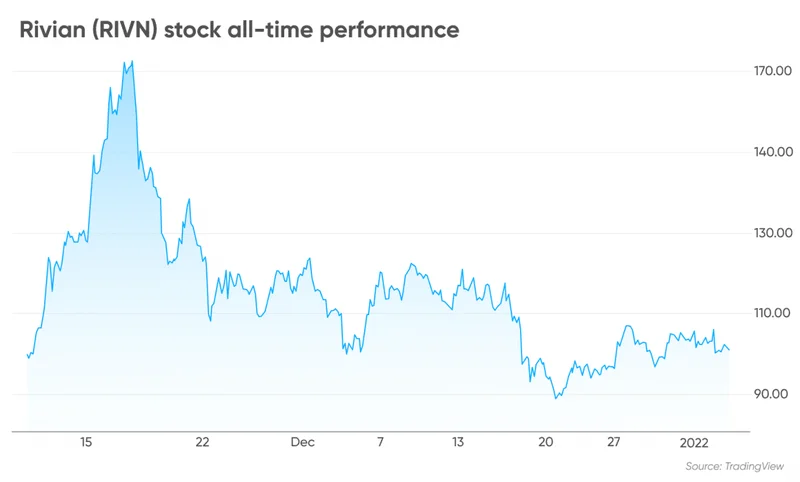I want you to look at a few numbers with me.
Don't worry, this isn't a lecture. Think of it as a form of digital archaeology. Sometimes, buried in the daily noise of the market, you find a signal—a tremor, a whisper from the future. And last week, on October 2nd, a fascinating little signal rippled out from a company I believe is at the very heart of the next great industrial transition: Rivian Automotive.
On the surface, it was just another day. New options contracts for Rivian began trading. For those of you who don’t live and breathe this stuff, an options contract is essentially a bet on where a stock’s price will be at a future date. It’s a way for the collective intelligence of the market to put its money where its mouth is.
The stock itself was trading around $13.41. A bet that it would fall below $10.00 by mid-November was going for a mere 14 cents. But a bet that it would climb above $16.00? That was fetching 58 cents. You can already feel the tilt, can't you? A subtle but clear lean towards optimism. But that’s not the signal. That’s just the background hum.
The real story, the code we need to decipher, is hidden in a concept called volatility.
This is where I need you to lean in, because this is the key. There are two kinds of volatility. The first is "historical volatility," which is what it sounds like: a measurement of how much a stock’s price has actually bounced around over the past. For Rivian, looking back over the last 250 trading days, that number is 61%. That’s its personality, its track record.
But then there’s "implied volatility." This is something entirely different. This is the market’s prediction of how much the stock will bounce around in the future. It’s baked into the price of those options contracts. It’s a forecast. It’s a measure of pure, unadulterated anticipation.
For that Rivian call option, the one betting on a rise, the implied volatility was 81%.

Let that sink in. The market’s memory says 61%. The market’s anticipation says 81%. When I first saw that gap, that twenty-point chasm between the past and the perceived future, I honestly just sat back in my chair, a huge grin on my face. This is the kind of data that reminds me why I got into this field in the first place. It’s not just a number. It's a story. It's the market holding its breath, expecting a lightning strike.
The Quantifiable Measure of Hope
The Tremor Before the Quake
So, what does this actually mean? It means the algorithm-driven, human-powered, collective consciousness of the financial world is looking at Rivian and saying, "Whatever you’ve been doing for the last year? Get ready for something bigger." A 61% swing is a bumpy ride. An 81% swing is a paradigm shift.
You see this kind of signal at major inflection points. It’s the quiet before the storm. It’s the market pricing in not just a good earnings report, but a fundamental change in the narrative. We’re talking about the potential for a production breakthrough, a game-changing software update that redefines the driving experience, or a new partnership that shocks the entire industry—this is the kind of energy the market is sensing, the kind of potential that makes people bet on a future that looks radically different from the past.
It’s easy for the cynical headline-chasers to look at a stock price like $13 and dismiss it. "Another overhyped EV maker," they’ll write, "struggling in a tough market." They see the number, but they miss the signal entirely. They’re looking at a photograph of the past while the rest of us are listening to a broadcast from the future. What they call "noise" or "speculation," I call the first tangible evidence of a belief system taking hold. It's the difference between looking at a pile of bricks and seeing the blueprint for a cathedral.
This moment reminds me, in a strange way, of the very early days of the Ford Motor Company. Before the Model T became a symbol of American industry, it was just an idea, a risky bet. Imagine the "implied volatility" around that company in 1908. The historical data would have shown a world of horses and buggies, of slow, steady, predictable transportation. But the anticipation was for something else entirely—a world remade by the internal combustion engine.
That’s the scale of the change we’re talking about. We are not just building electric cars. We are fundamentally rewiring our relationship with mobility, with energy, and with the planet itself.
And with that comes an immense responsibility. This market anticipation, this 81% signal, isn't just a green light for investors; it's a profound weight on the shoulders of every engineer, designer, and factory worker at Rivian. They are being tasked not just with building trucks, but with delivering on a promise—a promise of a cleaner, more adventurous, and more inspiring future. The market is betting on them. And frankly, so are we.
So, the next time you see a stock chart or a dry financial headline, I want you to look deeper. Ask yourself: What is the story these numbers are trying to tell? What is the human hope, the collective dream, being priced into these digital bits? Because right now, the numbers around Rivian aren't just about dollars and cents. They are a vote of confidence. They are the tremor before the earthquake. And it’s a beautiful, thrilling thing to witness.
The Signal Through the Noise
The future isn’t written in headlines; it’s whispered in data. That 20-point gap between what was and what could be is more than a market anomaly. It is the quantifiable measure of hope. It’s the sound of a thousand different people, all at once, betting on a better, faster, and cleaner tomorrow. And I can’t think of a more exciting bet to make.
Reference article source:
